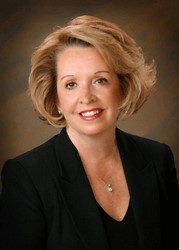Unlocking Time: Using Technology To Improve Efficiency

By Mary Kay Thalken, RN, MBA, chief clinical officer of Ensocare
Time is a precious commodity in healthcare, and it seems to be dwindling as healthcare staff are asked to take on more responsibilities and sustain high quality care with fewer resources. Yet many care givers spend much of their time on non-value-added tasks such as making phone calls, searching for equipment, and completing clerical work. These mundane to-dos take time away from direct patient care, which is not only frustrating for staff but also for patients, resulting in less-than-optimal encounters and outcomes.
Given the fact hospitals and health systems are being propelled toward value-based arrangements that reward better outcomes and lower costs — such as the Comprehensive Joint Replacement (CJR) model and the cardiac care bundled payment program from the Centers for Medicare & Medicaid Services — it has never been more important to find ways to lessen the constraints on staff time and ensure they focus on areas that warrant their level of expertise. In other words, instead of having staff spin their wheels on non-value-added activities, organizations should ensure their clinicians are working at the top of their licenses to improve overall care quality.
Technology Provides A Solution
The good news is it’s possible to give staff more time in their day. By reimagining inefficient processes using advanced technology, organizations can limit — and sometimes eliminate — menial tasks, freeing staff to spend more time on patient care.
For example, automated discharge technologies facilitate more effective care transitions which are historically cumbersome and labor-intensive. In many hospitals case managers spend more than half their work week on clerical activities. When transferring patients to post-acute care, for instance, case managers can get tied up calling different facilities, faxing information about a patient’s condition, and waiting around to hear whether the potential post-acute provider can accept the patient. If the facility declines, the case manager has to start over again until he or she finds a possible match.
This manual process puts a great deal of pressure on staff because they are being held accountable for a patient’s outcome while also being tied up with clerical tasks that do little to improve the patient’s condition and may even worsen it. In these cases, staff are basically working hard at working hard.
However, by employing enabling technology that reduces waste and reworks and increases efficiency, organizations can streamline care transitions and remove some of the purely administrative activities. For instance, case managers can use automated care coordination software to cast a wide net among potential facilities, communicating electronically with multiple organizations at the same time about a patient’s condition, treatment needs, and psychosocial preferences. Post-acute providers are able to respond electronically with their availability, typically in 30 minutes or less, rather than in four to six hours. This allows the case manager to generate a comprehensive and targeted list of post-acute options in a relatively short order.
Once a patient and family review the list and select a facility, the case manager can electronically send the organization the most relevant information directly from the patient’s EHR. The data arrive in an easy-to-interpret format that gives the receiving facility just the right amount of information. This is helpful for the post-acute provider, and it also prevents hospital staff from having to spend significant time copying and faxing portions of the medical record.
Not only can technology smooth the discharge process, it gives staff members more timely information to enrich patient interactions. For example, by having a well-vetted list of post-acute care options, case managers can have more in-depth conversations with patients about the next level of care. They can even use electronic tools to give patients virtual tours which help people to visualize the facilities and make more informed decisions. This fosters patient satisfaction and also increases the likelihood the patient will be matched with the most appropriate facility. The efficiency of the effort can also reduce length of stay because patients can be connected with a post-acute organization faster and transitioned out of the hospital sooner.
There’s No Time Like The Present
Discharge technology is just one way organizations can leverage automated solutions to improve efficiency and free up staff time. When organizations use these kinds of solutions, they optimize staff coverage and allow providers to work at the top of their licenses. Going forward, it will become increasingly difficult to meet the demands of value-based care without enabling technology. By embracing these tools, organizations can set themselves up for success, ensuring they meet patient needs while keeping staff focused on critical and impactful work.
About The Author
Mary Kay Thalken brings more than 25 years of experience in healthcare leadership to her current role as Chief Clinical Officer for Ensocare. Thalken contributes her executive, operational and clinical expertise to help hospitals manage patient care transitions, reduce length of stay and reduce preventable readmissions.
